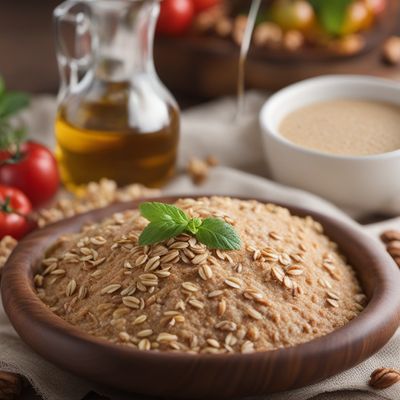
Ingredient
Walnuts
Nutty Powerhouses
Walnuts are the edible seeds of the Juglans genus of trees and are native to regions in Asia, Europe, and North America. They have a distinctively rich, earthy flavor and a crunchy texture. These nuts have a long history of culinary use, dating back thousands of years, and are renowned for their nutritional benefits and versatility in various cuisines.
Origins and history
Walnuts have been cultivated and consumed for thousands of years, with evidence of their use dating back to ancient civilizations such as the Greeks and Romans. They were highly valued for their nutritional properties and were often associated with wisdom and intellect. Today, walnuts are widely grown in countries like the United States, China, and Iran, and are enjoyed in a variety of dishes around the world.
Nutritional information
Walnuts are a nutrient powerhouse, packed with heart-healthy fats, protein, fiber, vitamins, and minerals. They are particularly high in omega-3 fatty acids, which are beneficial for brain health and reducing inflammation. Additionally, they provide a good source of antioxidants and are relatively low in carbohydrates.
Allergens
May contain tree nut allergens
How to select
When selecting walnuts, look for ones that are plump, well-sealed, and free from cracks or holes. Shake the nuts to ensure they do not rattle, as this may indicate they are stale. Opt for walnuts that have a mild, sweet aroma, as a strong or bitter smell can indicate rancidity. If possible, choose walnuts that are still in their shells, as this helps protect their freshness.
Storage recommendations
To maintain the freshness of walnuts, store them in an airtight container in a cool, dry place, such as a pantry or refrigerator. This helps prevent them from becoming rancid or absorbing odors from other foods. Shelled walnuts can be stored for up to six months, while unshelled walnuts can last up to a year.
How to produce
Walnut trees can be grown in suitable climates by planting walnut saplings in well-draining soil and providing them with adequate sunlight and water. It may take several years for the trees to mature and produce nuts, but with proper care, they can yield a bountiful harvest.
Preparation tips
Walnuts can be enjoyed raw as a snack, toasted and sprinkled over salads or oatmeal, ground into a paste for sauces or spreads, or incorporated into baked goods like cookies, cakes, and bread. They can also be used as a topping for yogurt or added to savory dishes like stir-fries or grain salads for an extra crunch and nutty flavor.
Substitutions
Pecans, almonds, or cashews can be used as substitutes for walnuts in most recipes. However, keep in mind that each nut has its own unique flavor profile, so the substitution may slightly alter the taste of the dish.
Culinary uses
Walnuts are widely used in both sweet and savory dishes. They are commonly found in baked goods like walnut brownies, banana bread, and walnut cookies. In savory dishes, they are often used in salads, pesto, and as a coating for meats or fish. Additionally, walnuts are a key ingredient in traditional dishes like walnut baklava and walnut-stuffed dates.
Availability
Commonly available in regions with suitable climates, such as the United States, China, Iran, and parts of Europe.
More ingredients from this category
Recipes using Walnuts » Browse all

Greek Honey and Cinnamon Diples
Crispy Greek Delights: Honey and Cinnamon Diples

Georgian-Style Smukavc with Walnut Sauce
Savory Walnut Delight: Georgian-Style Smukavc

Maccheroni with Walnut Sauce
Creamy Walnut Delight: Maccheroni with a Twist

Albanian-style Ajoblanco Soup
Creamy Walnut Soup with Albanian Flair

Georgian-inspired Ščipanci with Walnut Sauce
Savory Georgian Walnut Pasta Delight

Bosnian Fekkas with a Twist
Savory Bosnian Biscuits: A Delicious Twist on Fekkas

Georgian Spinach and Walnut Pkhali
Savory Delight: Georgian Spinach and Walnut Pkhali

Turkish Fig Delight
Heavenly Delights: A Sweet Journey with Turkish Fig Dessert

Romanian-inspired Date Pastries
Delicious Romanian Date Delights

Kyiv Delight Cake
Heavenly Layers of Delight: Kyiv Delight Cake

Presnac - Slovenian Cheese and Walnut Strudel
Savory Delight: Slovenian Cheese and Walnut Strudel

Danish Walnut Mochi
Scrumptious Danish Walnut Mochi: A Fusion of Japanese and Danish Delights